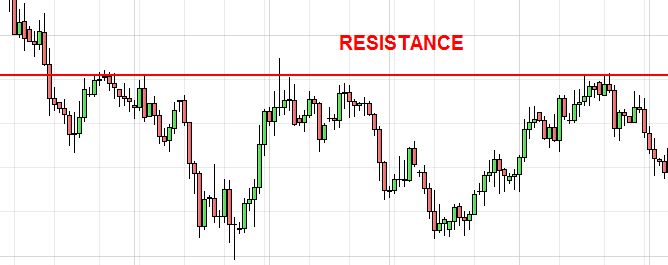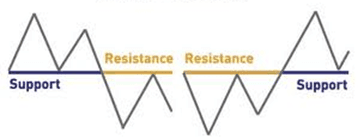Support & Resistance: The Foundation of Chart Reading
When you look at a stock chart, prices don’t move randomly. They often stop, bounce, or reverse at certain levels. These key levels are called support and resistance — and they’re some of the most important concepts in trading.
🟢 What is Support?
Support is a price level where buyers step in and keep a stock from falling lower. Think of it like a floor: every time the price falls to this level, it finds support and bounces back up. 👉 Example: If Apple’s stock keeps bouncing around $150 and doesn’t fall below, $150 is a support level.

🔴 What is Resistance?
Resistance is the opposite of support — it’s where sellers step in and keep a stock from going higher. It acts like a ceiling: every time the price climbs to this level, it struggles to break through and often pulls back. 👉 Example: If Tesla’s stock keeps hitting $300 and pulling back, $300 is a resistance level.

🔄 How Support & Resistance Work Together
When support breaks, it can turn into new resistance. When resistance breaks, it can turn into new support. 👉 Example: If a stock finally breaks above $100 resistance, that $100 level often becomes new support. Traders call this a role reversal.
🧱 Why Do These Levels Matter?
1. Decision Zones – Traders use them to decide when to buy or sell.
2. Risk Management – Stop-loss orders are often placed below support or above resistance.
3. Trend Confirmation – Breaking through resistance can signal strength. Falling through support can signal weakness.
📊 How to Spot Support & Resistance
1. Previous Highs and Lows – Look left on the chart. Where did price bounce before? Where did it get rejected?
2. Round Numbers – Stocks often react to big psychological levels like $50, $100, $1,000.
3. Moving Averages – Lines like the 50-day or 200-day moving average can act as dynamic support or resistance.

📝 Example
Imagine Netflix stock has bounced off $400 three times in the past month. That’s a strong support level. But every time it climbs near $450, it falls back down. That’s resistance. A trader might buy near $400 with a stop slightly below and sell near $450.
🎯 Quick Takeaways
Support is the floor where price struggles to go lower. Resistance is the ceiling where price struggles to go higher. Once broken, support can become resistance and vice versa. Use past price action, round numbers, and moving averages to spot these levels. Mastering support and resistance is like learning to read a map — it helps you know where price might turn, pause, or break out.
🔑 Next article in the Learning Center: Trendlines & Channels: Drawing the Path of Price
